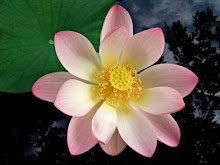Blue Lobelia
Lobelia inflata
Other Names: Blue Cardinal Flower, Blue Lobelia, Great Blue Lobelia, Great Lobelia, High-lobelia, Indian Tobacco, Lobelia
Habitat
Perennial herb native to Eastern N. America from Maine to S. Dakota, south to Texas and Missouri. Found growing in moist woods, stream and pond banks, and marshes. A beautiful garden border plant, cultivation is fairly easy, Lobelia prefers light to medium moist, well drained soils and partial shade. The stems are erect, sometimes branching, flower stalks. Growing to 3 feet high they are covered with light blue or purpleish two lipped flowers, the lower lip is divided into three pointed lobes and the upper lip into two. The lower leaves are large, ovate, alternate, hairy, and petioled (having a leaf stalk) while the upper leaves, growing on the stalk are smaller and sessile (having no leaf stalk). Flowers bloom from July to November. Seed capsules are formed after flowers fade and are two celled, containing many tiny brown seeds. Gather the plant tops after some of the seed capsules have formed, dry for later use.
Properties
Lobelia siphilitica and Lobelia inflata have basically the same uses. Lobelia was a highly prized medicinal plant and used extensively by Native Americans. It was considered a panacea, being used for just about everything that ailed them. Once it was discovered by Europeans and taken back to England they also used it for many illnesses. Lobelia is still used today as an alternative medicine in many parts of the world. Medical research has found the plants constituents to be Piperidine alkaloids including Lobeline, and other carboxylic acids as well as isolobelanine, gum, resin, chlorophyl, fixed oil, lignin, salts of lime and potassium, with ferric oxide. Lobeline stimulates the respiratory center of the brain, producing stronger and deeper breathing, making it very useful in treating many respiratory complaints, such as asthma, chronic bronchitis, whooping cough, spasmodic croup, and pneumonia. While at the same time isolobelanine, relaxes the respiratory and neuro-muscular system and acts as a nervine and antispasmodic. It is a most useful systemic relaxant and a holistic combination of stimulation and relaxation. The seeds contain a much higher percentage of lobeline than the rest of the plant. The whole plant is used as an analgesic, cathartic, emetic, expectorant, diaphoretic, anti-asthmatic, stimulant, antispasmodic, narcotic, and sedative. Used to treat convulsive and inflammatory disorders such as epilepsy, hysterical convulsions, traumatic injuries, tetanus, sores and abscesses, colds and fevers, diphtheria and tonsilitis. When chewed it tastes similar to tobacco and produces effects like those of nicotine. It is used in some antismoking products. Also used for scorpion and snake bites and to induce nausea and vomiting. A poultice of the root has been applied in treating pleurisy, rheumatism, tennis elbow, whiplash injuries, boils, ulcers and hard to heal sores.
Folklore
Used as a Ceremonial (Emetic) in religious ceremonies by some native American tribes. An infusion of plant was taken to vomit and cure tobacco or whiskey habit or as a love or anti-love medicine. A decoction of the plant was taken to counteract sickness produced by witchcraft. It was believed by some native North American Indian tribes that if the finely ground roots were secretly added to the food of an arguing couple they would love each other again.
Recipe
Infusion: Pour 1 cup of boiling water into l/4 to l/2 teaspoonful of the dried herb and let steep for l0 to l5 min. Drink three times a day. Tincture: take l/2 ml of the tincture three times a day.














